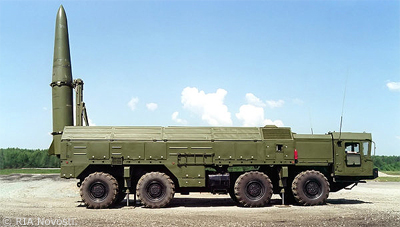iskander-missile.jpg

Part 1 of 2 Parts
I have blogged before about ways to improve your chances of surviving a nearby nuclear blast. Since we seem to be teetering on the brink of World War III, I thought it would be a good idea to revisit the subject. Russia has threatened to use tactical nuclear weapons on the battlefield if it is being beaten by NATO. Given that NATO is skirting the edge of being directly involved in Ukraine and Russia’s invasion is failing, the possibility of tactical nuclear weapons being used in Ukraine is rising.
It is estimated that Russia has thousands of tactical nuclear weapons, probably the biggest stockpile in the world. They could be deployed at any time. Ukrainian President Zelenskyy has repeatedly said that the world must take Russia’s threat to use nuclear weapons seriously.
In this post, we will consider what happens during the three stages of a tactical nuclear bomb explosion, The three stages are ignition, shock wave and radioactive fallout. The main focus of this post is how to survive such a blast.
Ignition is the first stage. There is a sudden flash in the sky as bright or brighter than the Sun. People turn away and run for cover. The bright flash suddenly fades but then comes back and continues. The double flash is caused by a competition between the fireball and the shockwave from the explosion. The landscape becomes very hot and bright. People shield their eyes to avoid retina burns. The intense thermal radiation will also cause burns on the skin. This may occur even through clothing. The best option here is to wear pale colored clothing or to be inside a building.
People will have received substantial doses of nuclear radiation including gamma rays, X-rays, and neutrons. They will seek shelter to avoid the worst of the heat and radiation.
For those who are still alive, they have survived the first few seconds of a nuclear detonation that was probably smaller than the nuclear bomb dropped on Hiroshima which was equivalent to fifteen tons of TNT. The survivors will have been on the periphery of the blast, not at ground zero. But in order for the surviving people to live through the next few seconds, a few actions are required.
The second state of the detonation is the blast wave. This consists of an overpressure shock wave which is followed by an outward blast wind. This is often followed by reverse winds returning to ground zero. These winds will damage or destroy all built structures within a certain radius from the epicenter of the blast. The destruction depends on the yield and height of the burst.
A fifteen-kiloton bomb would have a fireball radius of about three hundred feet. It would completely destroy everything up to about one mile from the epicenter. A one kiloton blast would have a fireball radius of about one hundred and sixty feet. There would be severe damage out to about thirteen hundred feet.
The shock wave travels faster than the speed of sound which is one thousand one hundred twenty-five miles per second. If a person is about six tenths of a mile from ground zero, they have less than three seconds to find cover. If they are three miles away from the epicenter, they have fifteen seconds to find cover.
Please read Part 2 next